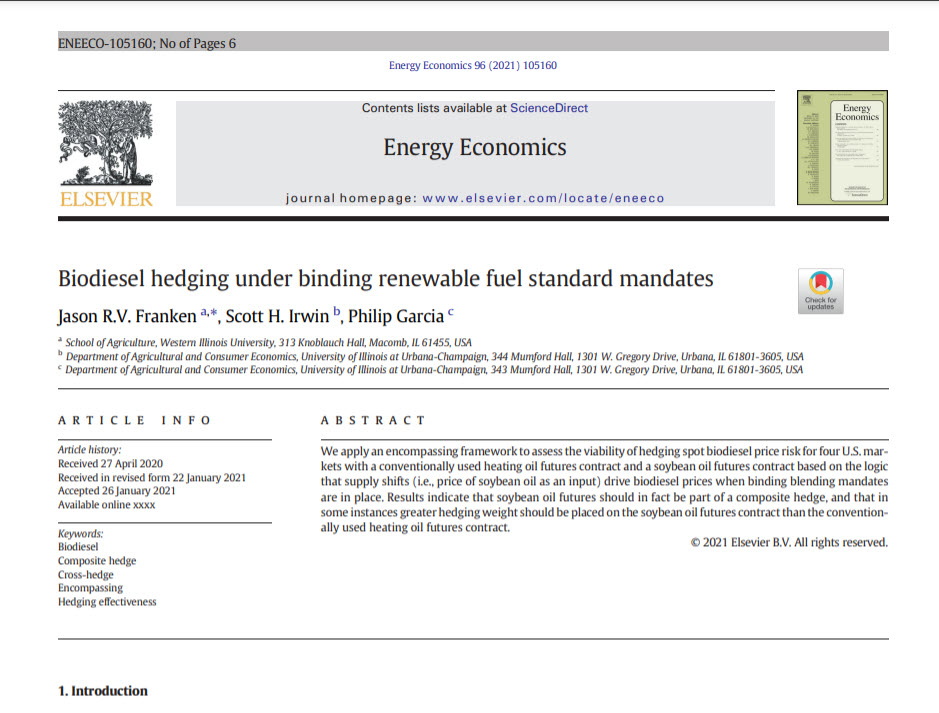
1. Weekend Reading: Have not done one of these for awhile. This one is on a brand spanking new article coming out in Energy Economics "Biodiesel hedging under binding renewable fuel standard mandates." sciencedirect.com/science/articl…
2. Hopefully that link is in front of the paywall. I can never tell from publishers page. I really think this is a fun little article. My co-authors are my long-time partner in crime Phil Garcia and Jason Franken of Western Illinois.
3. The genesis for this article was from following trade conversation on biodiesel pricing and hedging. Always much discussion about the leading role of heating oil/diesel futures on biodiesel prices, and by implication, how one should hedge biodiesel.
4. This never made sense to me from studying the basic economics of the RFS mandates. If biodiesel mandate is binding then this simple economic model predicts that soybean oil prices lead ("cause") biodiesel prices, not the other way round. 

5. With a binding mandate, the red mandate line above the price of diesel becomes the demand curve for biodiesel. Then for a wide range, shifts in supply curve determine biodiesel prices. What shifts supply curve? Soybean oil feedstock prices. 

6. This has a radical implication for hedging biodiesel. Taken at face value, it says that a biodiesel hedge should be placed 100% in the soybean oil futures market not the heating oil/ULSD futures market. Of course, this should be tested with real data.
7. Empirical hedge estimates here for different locations in the US. Key is the encompassing regression lambda estimate. Notice it is 0.89 in IA and near and above 0.50 in other locations. So soybean oil futures are important for hedging biodiesel. 

8. Theory was not entirely correct because both soybean oil and ULSD futures important for hedging biodiesel. But soybean oil is at least as good a hedge as ULSD and likely much better at the biodiesel plant level 

9. The punch line is that heating oil/ULSD should not be the only hedging instrument used for biodiesel. Using soybean oil and ULSD will work much better, and this makes economic sense.
@threadreaderapp unroll
• • •
Missing some Tweet in this thread? You can try to
force a refresh







